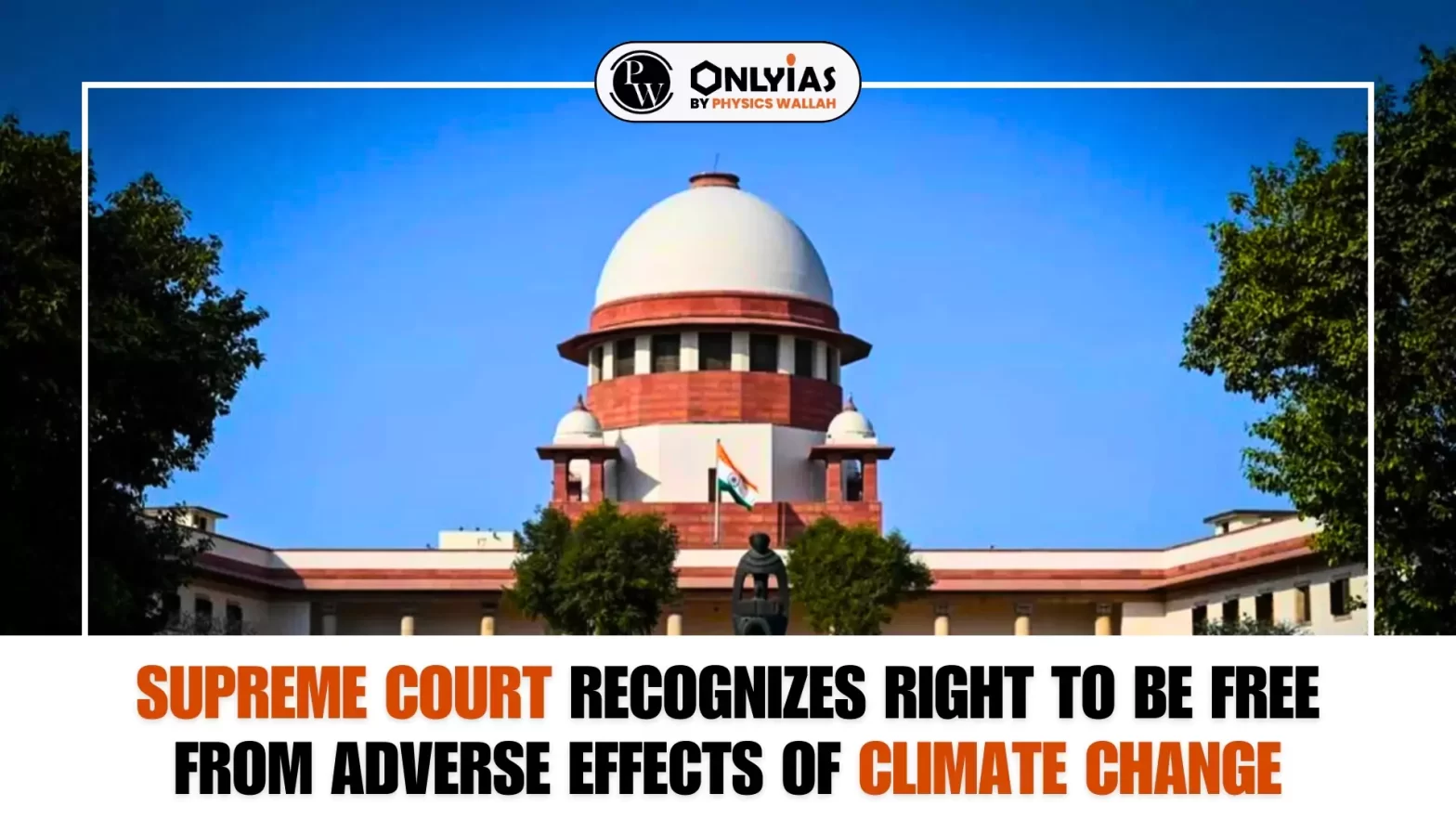![]() 10 Apr 2024
10 Apr 2024

Recently, the Supreme Court of India historically stated that people have a right to be free from adverse effects of climate change recognised by Articles 14 and 21 of the Indian Constitution.
| Relevancy for Prelims: SUPREME COURT, Environment & Ecology, Fundamental Rights (Article 12-35), M C Mehta v Union of India (1987), Climate Change In India, Climate Change & Mitigation Strategies, Protected Areas, Biosphere Reserve, National Park, Wildlife Conservation In India, and Great Indian Bustard.
Relevancy for Mains: Right To be Free from Adverse Effects of Climate Change- About, Need and Significance. |
|---|
All associated stakeholders are required to work in a collaborative and proactive manner to come out with an effective solution to balance two objectives viz. the conservation of the bird and India’s sustainable development goals.
| Prelims PYQ (2023):
Consider the following statements: Statement-I: Carbon markets are likely to be one of the most widespread tools in the fight against climate change. Statement-II: Carbon markets transfer resources from the private sector to the State. Which one of the following is correct in respect of the above statements? (a) Both Statement-I and Statement-II are correct and StatementII is the correct explanation for Statement-I (b) Both Statement-I and Statement-II are correct and StatementII is not the correct explanation for Statement-I (c) Statement-I is correct but StatementII is incorrect (d) Statement-I is incorrect but Statement-II is correct. Ans: (a) |
|---|
| Must Read | |
| NCERT Notes For UPSC | UPSC Daily Current Affairs |
| UPSC Blogs | UPSC Daily Editorials |
| Daily Current Affairs Quiz | Daily Main Answer Writing |
| UPSC Mains Previous Year Papers | UPSC Test Series 2024 |

<div class="new-fform">
</div>